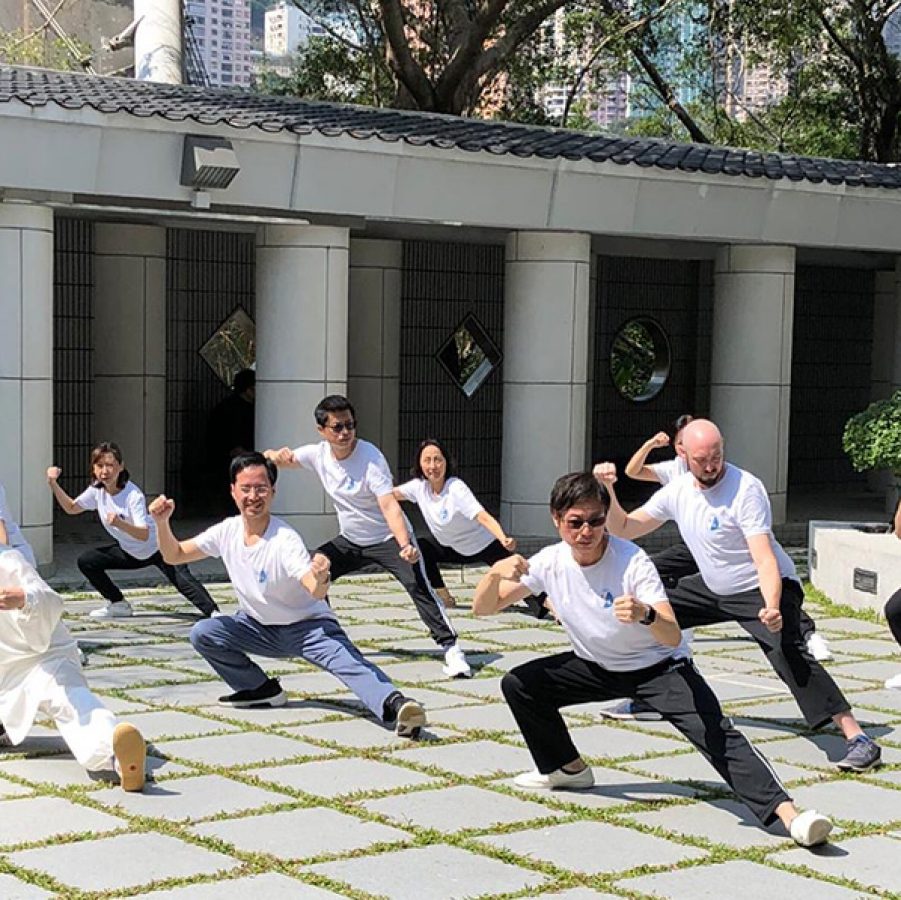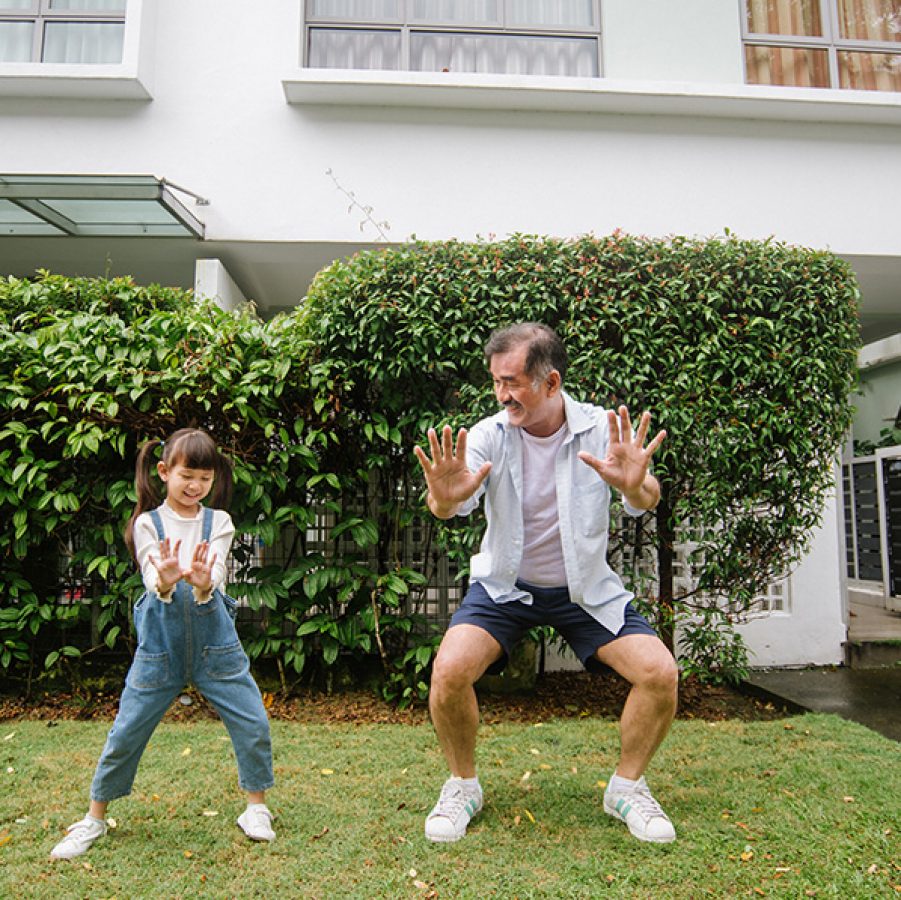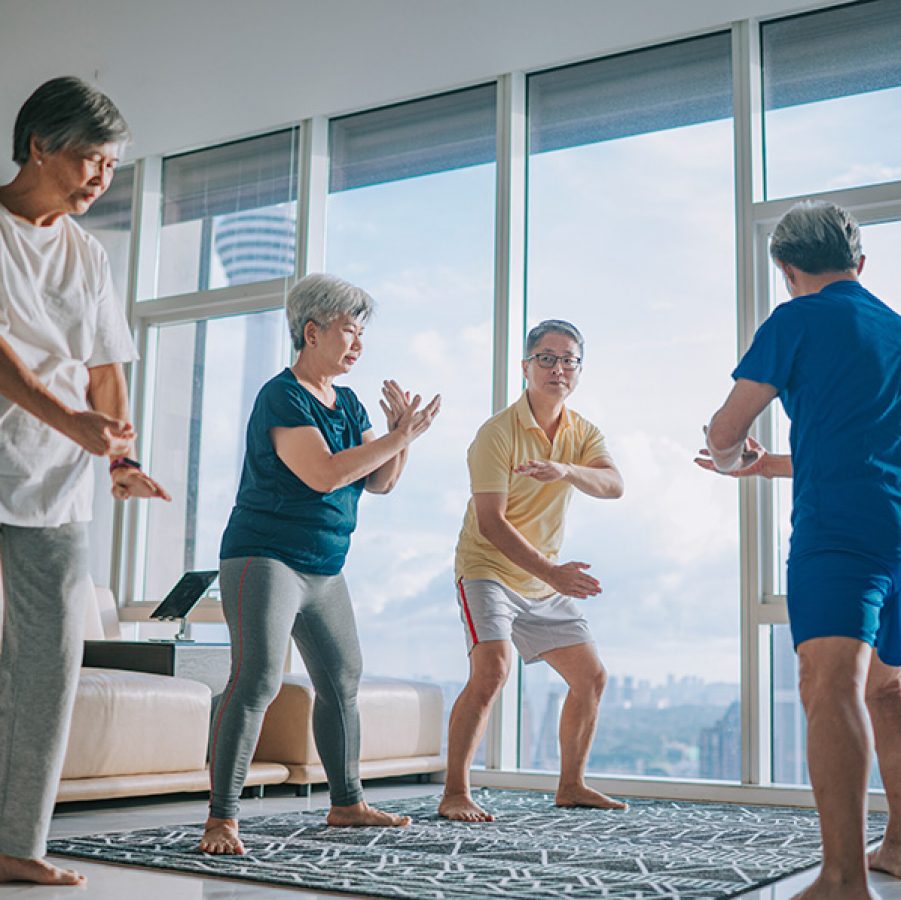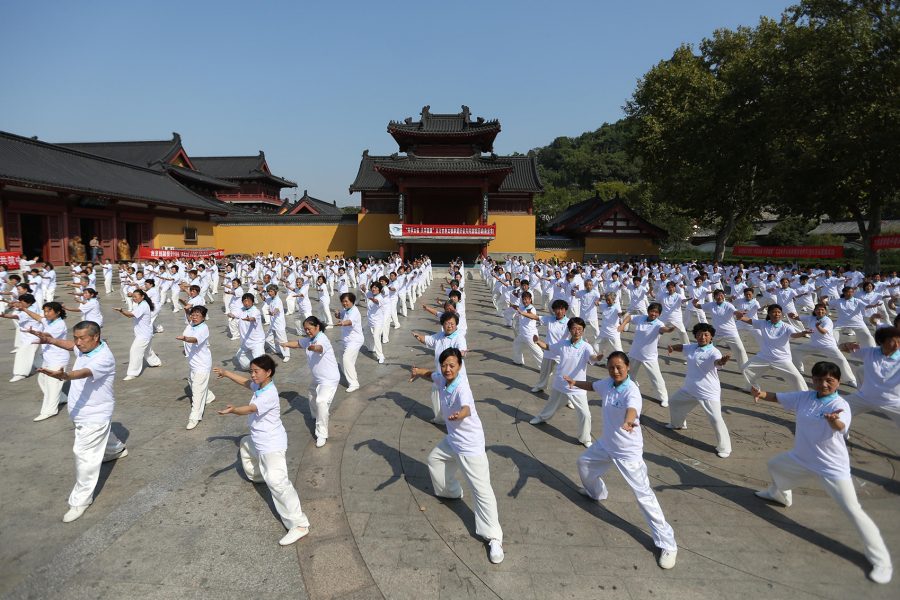Many studies have reported on the health benefits of tai chi, from improving overall fitness and cognition in elderly practitioners to its association with greater longevity. The US Department of Health and Human Services even suggests doing tai chi, a “mind-body exercise good for balance”, as an alternative to yoga.
However, beneath its reputation as a great way to stay active is an ancient martial art that embodies an entire cultural philosophy, something that Master Chow Chin Ching – founder of Chen Style Tai Chi Institute – hopes more people will be open to learning no matter their age.
“There are no words to fully describe what is tai chi. From time to time, new insights come – it’s a kind of progress to explore the world and yourself,” says Chow.
It has certainly been a journey of perseverance, passion and self-discovery for Chow, who was born into a kung fu family and inherited his father’s “Kwong Sai Bamboo Forest Temple Praying Mantis Kung Fu” to which he felt a strong connection, before dedicating endless hours each day to learning tai chi, and later teaching it.

Credit: Chen Style Tai Chi Institute
Why should you learn tai chi?
Chow believes that tai chi is suitable for people of all ages, especially the middle-aged and retirees. “Those who work in the office, they’re always sitting and lack exercise, which can badly impact your immune system,” he says. “Doing tai chi is good for blood circulation, and can help reduce stress and anxiety.”
Meanwhile, those who have retired “need a safe exercise for long term health benefits, to keep their bones and muscles working, and which can even make them stronger.”
For Chow, there’s been a variety of reasons why his students decided to learn tai chi from him, with the top priority being health. Many of his students had been recommended by their doctors to practice tai chi for long-term improvements to health, including some concerned about high blood pressure, diabetes, and shoulder or leg pain.
While some are eager to learn a type of kung fu for self-defence or combat, others choose to learn tai chi as a way to acquaint themselves with Chinese culture. “Many of my students are from other countries. I teach them in English but sometimes I tell them the Cantonese pronunciation and the meaning behind it. It makes them feel more at home in Hong Kong.”
An example Chow shares is a movement called “cloud hands ”, in which the up-and-down movements of both hands are strung together to confuse the enemy.
Contrary to most people’s impression of tai chi as a gentle flowing series of movements, tai chi was used primarily as a martial art in the past. The style Chow inherited and now teaches is the Chen style, the oldest and most original form of tai chi, created about 600 years ago in Henan.
“It was used for self-defence,” Chow explains, pointing to a rack of weapons also used in the art by the wall of his classroom, containing a guan dao, other Chinese polearms and a few swords. “Then about a hundred years ago, people realised that tai chi has great benefits both mentally and physically. The image of tai chi started to change.”
But practicing tai chi for Chow remains closely connected to its history. “When you are practicing the form and the internal training method by yourself, you feel connected with the ancient world that no longer exists in the modern city.”

Credit: simon2579/Getty Images
The benefits of learning tai chi
The advantages of practicing tai chi range from physical to mental.
“First of all, practicing tai chi helps improve balance,” says Chow. He describes tai chi as a safe and effective way to strengthen the lower body and burn calories, with its soft movements helping to improve flexibility and mobility.
Second, breathwork and the movement of qi associated with practicing tai chi helps to enhance blood circulation, which supports the immune system.
Third, Chow describes tai chi as a connection between the external with the internal, in which bringing your breathing in line with the way your body moves enhances your self-perception. This increased awareness can bring about a sense of peace and tranquillity, which may help with sleep disorders, stress, anxiety and depression.
Having taught over 3,000 students from all over the world including celebrities, professional athletes and office workers, Chow believes tai chi can help people in their work life as well. He explains, “tai chi can help us be more focused and concentrated at work, thereby increasing work efficiency.”
At the same time, the meditative nature of tai chi also helps relax and rest the mind.
It’s also useful to do during a short break in the office. “There are a few moves you can do even in a small office space,” Chow says, demonstrating a wrist-rotating movement that simulates holding a ball and exercises the wrists and upper body.

Credit: Edwin Tan/Getty Images
How to learn tai chi as a beginner
Practicing tai chi involves learning a number of movements first that are then put together in sequence as a “form”. How you perform the movements is also split into several levels. For example, a form that Chow has mastered called Sudden Thunder Tai Chi consists of 74 movements and 15 levels, where the beginning levels focus on performing the movements gently and slowly and the intermediate levels switch to quick explosive bursts of energy that require extensive practice.
For beginners, while following videos on YouTube can be a great way to spark interest in the martial art, Chow recommends people who are interested in continuing their learning to find a sifu (tai chi teacher) in order to build up a good foundation of the basic movements.
Chow emphasises that by learning tai chi formally, one will discover more about the martial art’s origins and history, passed down through generations; the meaning behind each movement and the philosophy of traditional Chinese culture, revealed with each new sequence formed.
Want to give tai chi a try? Master Chow offers beginner and experienced courses , as well as classes tailored to tourists. Be sure to pick up all your sporting essentials from the Cathay Shop before you attend your class, and start your wellness journey with us to earn miles while staying active.
More inspiration
Hong Kong travel information
- China – the Chinese Mainland, Hong Kong SAR, Macao SAR and Taiwan Region
- Hong Kong SAR - English
- Chinese Mainland (China) - English
- Taiwan, China - English
- 香港特別行政區 - 繁體中文
- 中国內地 - 简体中文
- 中國台灣 - 繁體中文
- Africa
- South Africa - English
- Asia
- Bangladesh - English
- Korea - English
- Singapore - English
- Cambodia - English
- 한국 - 한국어
- Sri Lanka - English
- India - English
- Malaysia - English
- Thailand - English
- Indonesia - English
- Maldives - English
- ประเทศไทย - ภาษาไทย
- Indonesia - Bahasa Indonesia
- Myanmar - English
- Vietnam - English
- Japan - English
- Nepal - English
- Việt Nam - tiếng Việt
- 日本 - 日本語
- Philippines - English
- Australasia
- Australia - English
- New Zealand - English
